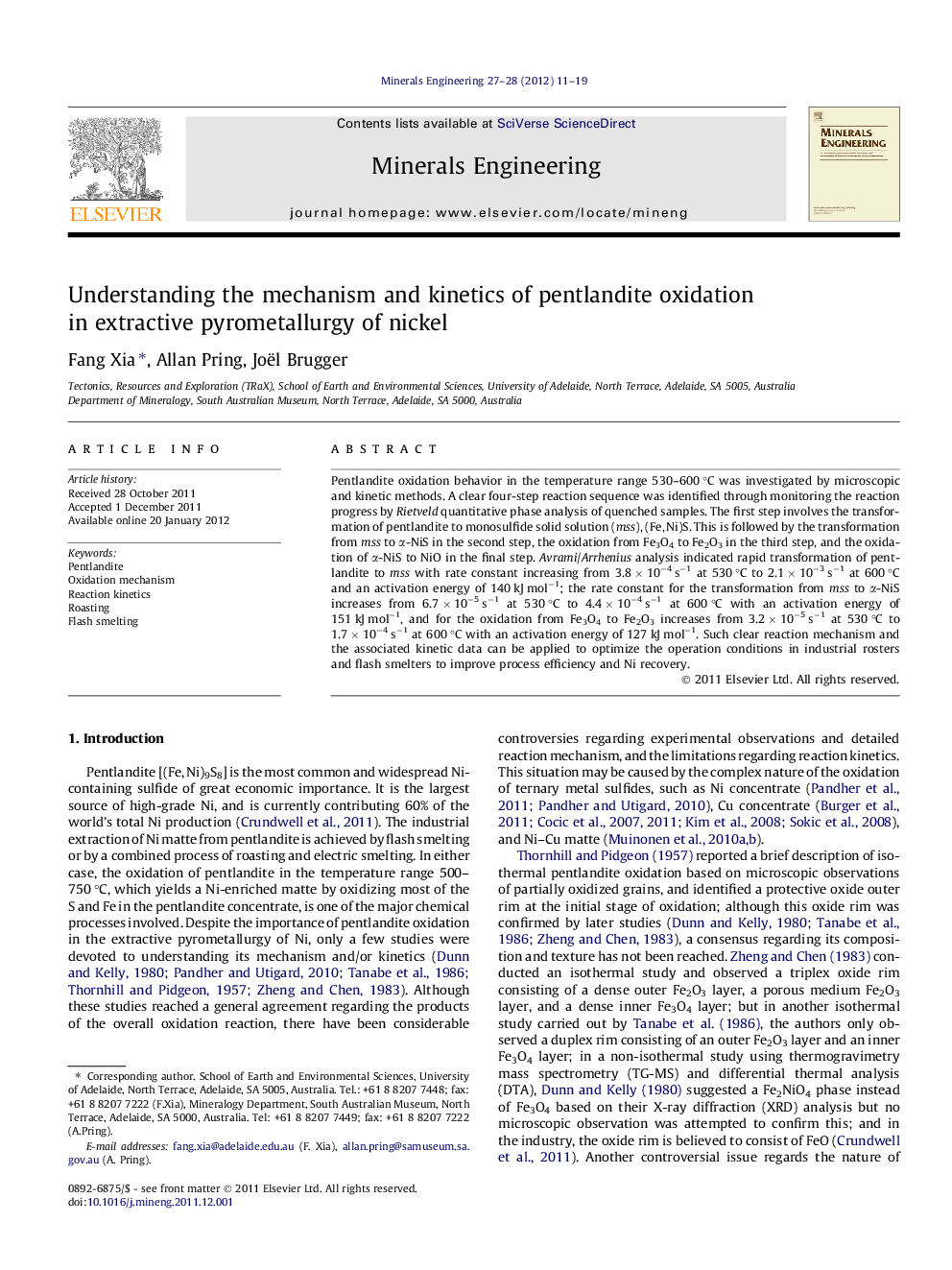| Article ID | Journal | Published Year | Pages | File Type |
|---|---|---|---|---|
| 233672 | Minerals Engineering | 2012 | 9 Pages |
Pentlandite oxidation behavior in the temperature range 530–600 °C was investigated by microscopic and kinetic methods. A clear four-step reaction sequence was identified through monitoring the reaction progress by Rietveld quantitative phase analysis of quenched samples. The first step involves the transformation of pentlandite to monosulfide solid solution (mss), (Fe, Ni)S. This is followed by the transformation from mss to α-NiS in the second step, the oxidation from Fe3O4 to Fe2O3 in the third step, and the oxidation of α-NiS to NiO in the final step. Avrami/Arrhenius analysis indicated rapid transformation of pentlandite to mss with rate constant increasing from 3.8 × 10−4 s−1 at 530 °C to 2.1 × 10−3 s−1 at 600 °C and an activation energy of 140 kJ mol−1; the rate constant for the transformation from mss to α-NiS increases from 6.7 × 10−5 s−1 at 530 °C to 4.4 × 10−4 s−1 at 600 °C with an activation energy of 151 kJ mol−1, and for the oxidation from Fe3O4 to Fe2O3 increases from 3.2 × 10−5 s−1 at 530 °C to 1.7 × 10−4 s−1 at 600 °C with an activation energy of 127 kJ mol−1. Such clear reaction mechanism and the associated kinetic data can be applied to optimize the operation conditions in industrial rosters and flash smelters to improve process efficiency and Ni recovery.
Graphical abstractFigure optionsDownload full-size imageDownload as PowerPoint slideHighlights► We study the mechanism and kinetics of pentlandite oxidation in nickel pyrometallugy. ► Pentlandite oxidation follows a four-step reaction sequence. ► Reaction kinetics for each step was determined by the Avrami/Arrhenius method. ► Speed up step 1 and 2 will improve efficiency for roasting and flash smelting. ► Slow down step 3 and 4 will increase Ni recovery in roasting and flash smelting.
